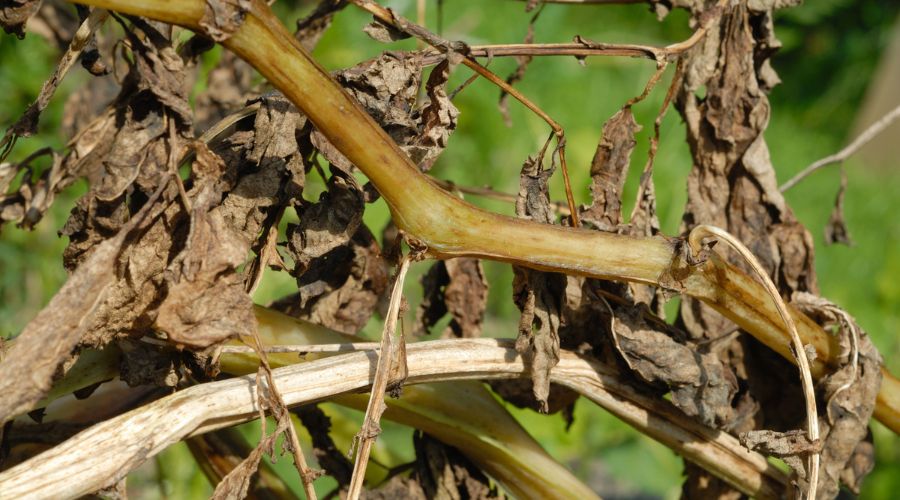Expert advises targeting tuber blight protection from zoospore movement
30th July 2024
Potato crops have endured long periods of weather conditions highly conducive to blight this season. Reports of blight outbreaks submitted for testing with the Fight Against Blight campaign have now topped 135 incidences across the UK.

While growers have responded with robust blight control strategies, attention has now turned to protecting tubers from the inevitable high threat of infective spores from reaching tubers, warns Syngenta technical manager Andy Cunningham.
Mr Cunningham advises: “Keeping up with the programme to maintain blight free foliage is still crucial for building tuber yield, especially in crops where wet and cool conditions delayed planting and early growth.
“Turning now to include products that provide specific strong tuber blight protection will further help assure yields and tuber quality.”
Built-in resistance management
The expert highlights that the new Evagio Forte from Syngenta combines both the outstanding foliar blight control of mandipropamid with the added strength of amisulbrom to enhance performance and target tuber blight protection.
“In addition to the built-in resistance management, offered by the combination of active ingredients with different modes of action, Evagio Forte is particularly well suited for use in the programme from flowering right through to the end of the programme,” Mr Cunningham said.
Syngenta said that its trials have shown that Evagio Forte delivers improved foliar blight performance over straight Revus, as well as excellent tuber blight control through its zoospore activity.
Potato blight lesions typically produce sporangia that can spread long distances on the wind during warmer conditions (17 to 24⁰C), but as conditions cool, below 17⁰C, they are more likely to produce zoospores that physically move shorter distances in surface moisture that infects tubers.
Research has shown that amisulbrom works to protect against tuber blight infection in multiple ways. Firstly, it significantly reduces the production of infective zoospores from any existing blight lesions in the crop, even when applied in an early curative situation.
It then targets blight zoospores by inhibiting their release but also impacting their motility, to effectively stop the spread of spores within the film of moisture on the leaf or in the soil. Zoospores are typically active for between two to 10 hours and move using a combination of flagella whips; limiting this action can help to prevent zoospores from moving down to tubers.

Greater coverage of lower leaves and stems
The trials indicated that the zoospore inhibiting properties of amisulbrom would remain at active concentration for at least the duration between typical spray intervals, and probably offering additional protection thereafter.
Amisulbrom is also rapidly taken up and absorbed by the was layer in the leaf, to prevent it being washed off by rain or irrigation soon after application, the company confirmed.
“Syngenta application advice advocates treatment with Evagio Forte using the 3D ninety nozzle. The larger droplets and angled spray pattern deliver greater coverage of lower leaves and stems to stop spore spread,” Mr Cunningham concluded.
In larger, post flowering, canopies application in at least 200 litres of water volume will further help achieve good coverage of the leaf area to protect against blight, Syngenta recommends.
Read more arable news.
